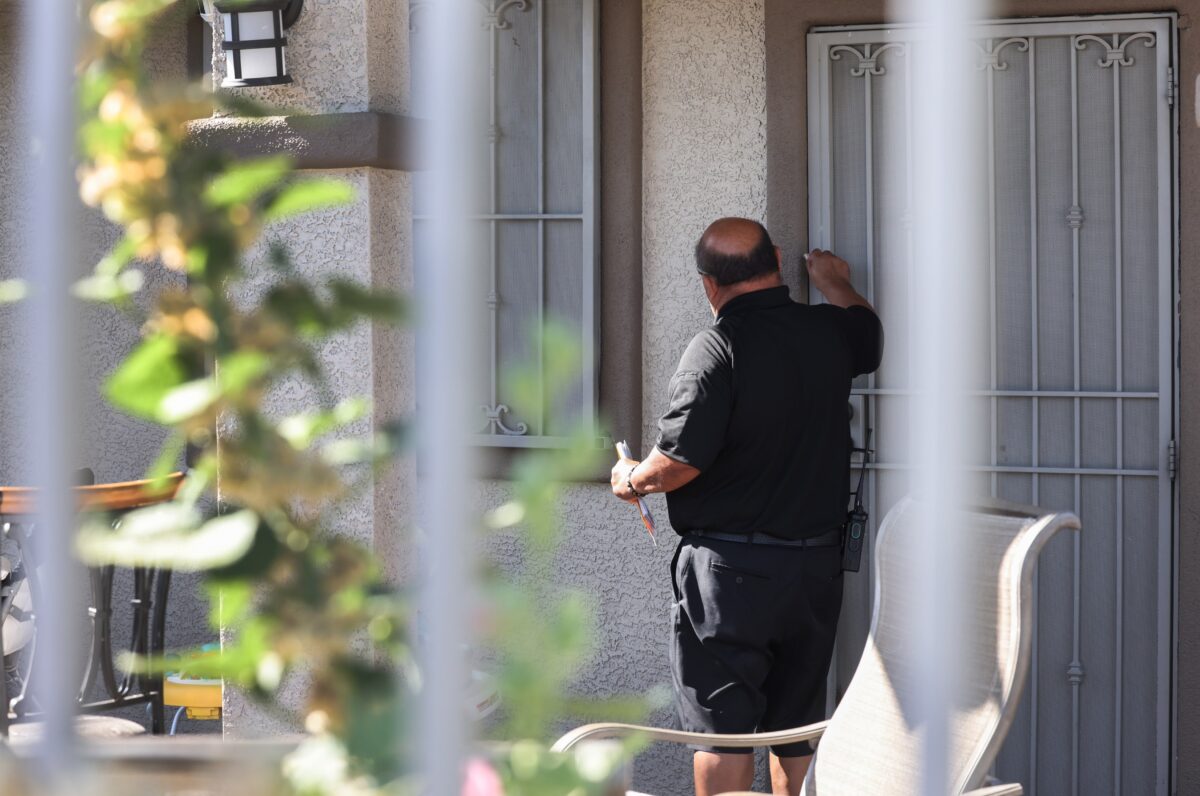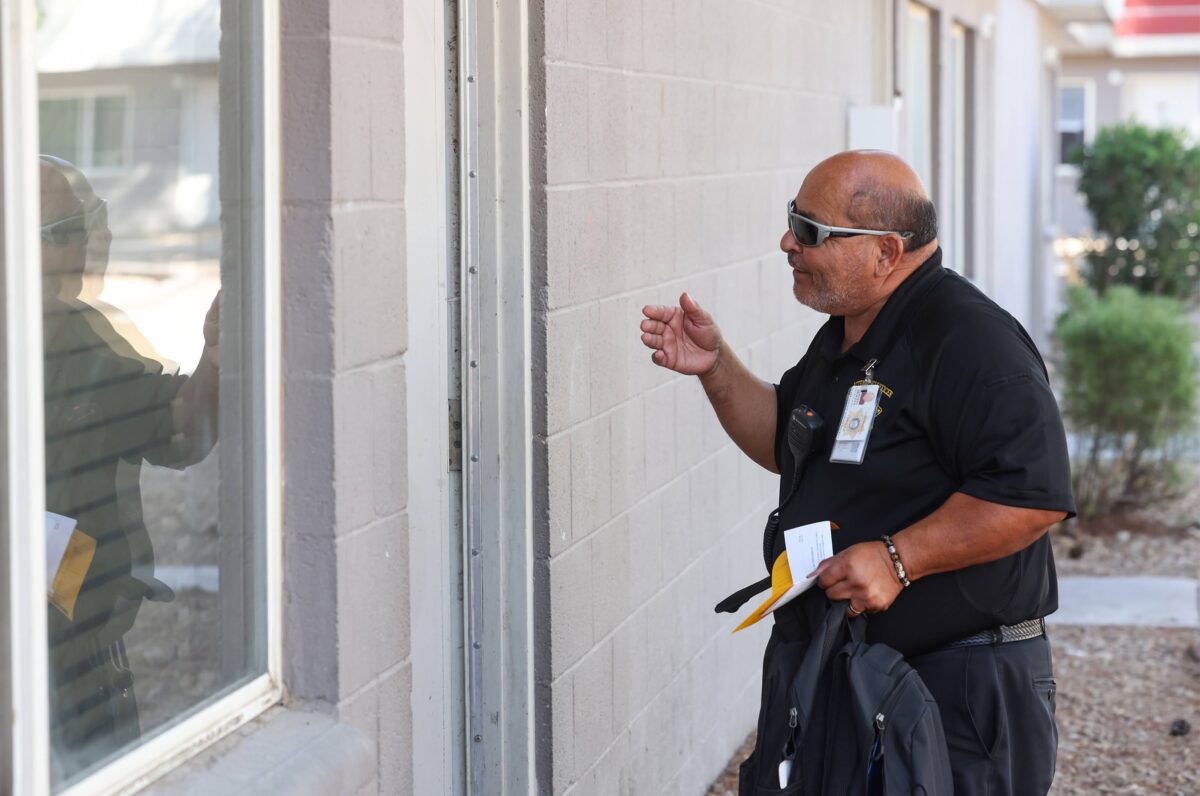Clark County schools using the summer break to track down chronically absent students

The Las Vegas heat was still bearable when Clark County School District attendance officer Roberto Molina began his route on a recent June morning.
He climbed into a white Chevy Traverse and pulled out a tablet with a list of addresses of students to check in on. Molina said many of the students were unenrolled from their schools for excessive absences, some of them disappearing just a few credits short of graduation. His job is to pay each of them a visit and make sure they’ve enrolled in a new school or to encourage them to return to school and finish their education.
Molina has worked as an attendance officer for the district for 26 years. He said he’s been able to successfully connect with students and get them to graduate or put them back on track – but it's not always easy.
He’s seen children who have fallen through the cracks because both parents work and have limited time to watch their kids. Parents’ schedules also make it difficult for the district to contact them via a call, text or email and let them know their child has been absent from school. That’s when Molina is called in to do a home visit.
“We actually are the eyes and ears of the school,” Molina said. “We knock on the door, find out what’s going on and take it from there.”
After the pandemic, the district’s chronic absenteeism rate jumped from 22 percent during the 2018-19 school year to nearly 41 percent during the 2021-22 school year when in-person learning fully resumed, according data from the Nevada Department of Education. Chronic absenteeism is defined as a student missing 10 percent or more of school days for any reason, including excused absences such as for a doctor’s appointment.
The rise in chronic absenteeism was seen nationwide. Attendance Works, a nonprofit focused on addressing this issue, estimates the number of students who were chronically absent nationwide may have grown to 16 million, more than double the figure before the pandemic. Some of the root causes of absenteeism include barriers to attendance, aversion to school, disengagement and misconceptions about the impact of absences.

Data for the most recent school year is expected to be released in September, but Assistant Superintendent of the Education Services Division Kevin McPartlin said he’s expecting to see some improvement in that rate based on preliminary data from the first semester of the school year, which shows a decline compared with the two prior school years.
The district’s chronic absenteeism rate fell to less than 30 percent during the first half of the 2023-24 school year, a decrease of about 6 percentage points during the same period in the 2022-23 school year. The preliminary data also shows a decrease in chronic absenteeism among all student demographics during the first quarter of the previous school year.
In January, the district opened a new office that centralizes the various efforts within the district and likeminded community partners to address absenteeism. It was approved by then-Superintendent Jesus Jara using existing staff and resources, McPartlin said.
“We had multiple different departments that all were actively trying to support schools and support families and to try to get students in school and be engaged, but no one truly owned that work of supporting schools,” McPartlin said.
One of the office’s responsibilities is to provide training and support to schools, especially ones with high chronic absenteeism rates or with new administrators who may not have experience in addressing this issue, said its Director Danielle Jones. One strategy is to increase communication with families and help them understand the district’s attendance policies and the possible consequences of too many missed school days such as lost credits at the secondary level.
The office also works with the district’s attendance officers to increase their home visits and reach out to the student’s families after the first few absences.
“We want them to come in and talk to us and fix the problem early on, rather than wait,” Jones said.
Jones said the officers conducted 38,000 home visits during the last school year, more than double what the district has done in past years. This summer, Jones said attendance officers such as Molina are focusing on contacting students who were withdrawn from school to encourage them to return or find out if they enrolled at another school.

Starting this month, attendance officers also will bring school supplies on their visits to get students excited about the upcoming academic year, she said.
McPartlin said staff from individual schools also have joined in after training from the new office, which Jones said makes home visits more impactful to some students who feel alienated from their campuses.
“We switched the conversation from punitive to more supportive, so there's more compassion in those home visits, especially when we brought along the schools and their staff to these home visits.”
Molina said part of his job is to identify the barriers keeping students from attending schools and to find solutions to address them such as referring them to organizations where they can get new clothes or assistance paying utilities.
“We try to make excuses disappear,” he said.
One of his success stories involved a student who was missing school because he was being bullied for having a gay parent. Molina said he arranged counseling for the student and got him involved with the Boys and Girls Club. He said that student is now on track to finish high school.
Molina also stressed the importance of following up with families, and said it’s something he likes to do after he finishes his home visits for the day.
“That’s the most important thing about this job — don't just go in there once but you know go as many times as you need to,” Molina said.
But the transient nature of the Las Vegas community can make tracking down students harder, Molina said, especially if they moved and didn’t leave a forwarding address. He said officers may also confront angry parents in the field, and that can make their jobs dangerous at times.
In April, an attendance officer checking on an absent child was able to help rescue a student with autism who was kept in a metal cage inside a Henderson household. The parents were later arrested.
Despite the district’s efforts, Molina said he doesn’t think chronic absenteeism is an issue that can be eliminated. But he said he’s proud of the students he has been able to reach.
A few months ago, Molina said he ran into a former student while getting an oil change for his wife’s car. The young man told him that thanks to Molina’s encouragement, he went back to school, got married and was the manager of the shop.
“Those are the moments that make all of this worth it,” he said.
